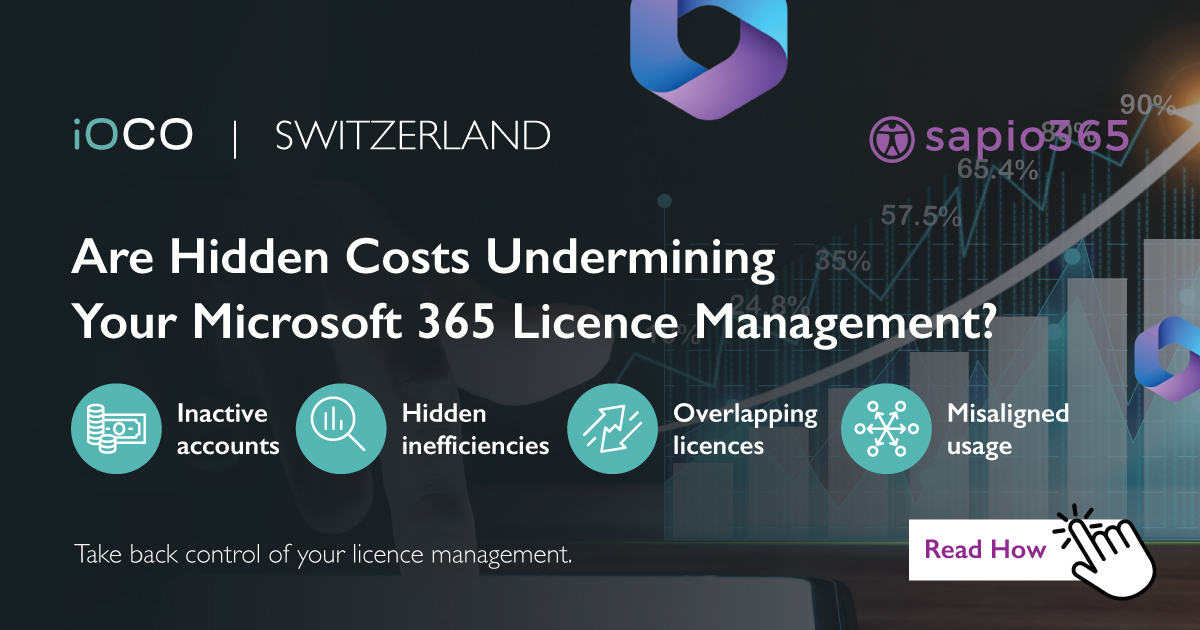Software sprawl, spiralling costs, risk, and the urgent need for SaaS management
COVID-19 lockdowns across the world triggered a frantic rush to find tools, applications, and solutions that would enable employees to work comfortably and productively from home. The IDC found that 30% of businesses spent more on Software-as-a-Service (SaaS) due to the pandemic.
Given the urgency of the situation, it’s not likely that due process was followed each time employees signed up for new SaaS applications. The result? SaaS sprawl, potentially hundreds of licenses left unused (but still being billed for), issues around integration, and greater exposure to cyber and other risks.
SaaS is the foundation for remote work, and it’s essential to succeed in a cloud-first, digital world. The benefits are undeniable: scale, flexible pricing, zero management, productivity and collaboration enhancements, and instant upgrades, to name a few. But left to grow unmanaged, SaaS creates uncontrolled cost and risk, creating an urgent need for effective SaaS management.
The explosion in SaaS apps has revolutionised how we do business. It’s become the default delivery model for business software, and for good reason – buying licenses and accessing applications from the cloud is cheaper and easier than installing software on-premise. What’s more, businesses have access to the latest software versions, and when it comes to options, there really is an app for everything.
Organisations worldwide used an average of 80 SaaS applications in 2020, accounting for 70% of these organisations’ overall software utilisation. Enterprises employing more than 1,000 people were using around 177 SaaS apps. Or so they thought.
Research found that the average organisation actually uses 651 SaaS apps because, once they dig deeper, they find two to three times more SaaS and cloud apps than they thought they had.
This lack of visibility into a business’s software environment results in SaaS sprawl – a situation where your employees use nine different collaboration tools, and you are only aware of four of them.
This creates new challenges for IT teams, including an over-reliance on manual management, which 94% of IT executives believe leads to poor decision-making about SaaS spending. Eighty-eight percent believe that having a central location for SaaS management would simplify processes, increase visibility, and allow teams to focus on strategic initiatives.
The SaaS industry continues to grow unabated. Between 2015 and 2020, the sector exploded from $31.5 billion to an estimated $145.5 billion, and it’s projected to experience its largest annual growth between 2021 and 2022, reaching a value of $171.9 billion.
Here are five benefits of SaaS management.
1. Optimised and right-sized SaaS inventory
77% of IT executives rely on manual, reactive measures to manage subscriptions and gauge their effectiveness. That means relying on someone to remember to cancel and renew subscriptions, monitor users and usage, and cancel credit card transactions at the end of a free trial.
SaaS management starts with a comprehensive assessment to understand the state of your software environment. This includes knowing what apps are used and recording key details, such as users, renewal dates, license/seat count, cost, vendors, and purpose.
This process will also uncover shadow IT, functional redundancy, duplicate apps, prohibited, “orphan”, and dormant apps, and software that doesn’t comply with cybersecurity, data protection, or financial protocols.
Use this information to right-size your SaaS inventory:
- Identify and cancel redundant subscriptions that you no longer use, don’t serve the business’s needs, or have overlapping features, functionality, and integrations. Research shows that an app’s average usage rate is 47%, yet 29% of apps have a usage rate of less than 20%. On average, companies have 135 redundant apps that they still pay for, which means plenty of opportunities for consolidation and cost savings.
- Determine which apps deliver the biggest return on investment. You can establish this by measuring app utilisation, including who logged in, how often they log in, and how much time they spend using the app. With a better understanding of how your users interact with SaaS apps, you can use this information to inform future SaaS purchasing decisions.
- Establish end-to-end app lifecycle management by continually reassessing your software needs, monitoring upcoming renewals, and ensuring apps are properly provisioned through license distribution management, vendor and contractor management, license negotiations, etc.
2. Optimised security
Companies use free apps three times more than paid apps. But don’t be fooled – you’re paying with your data.
Employees generally don’t need IT’s permission to download a demo or sign up for a free trial. Yet, that’s all it takes for apps to access your data. And the more apps – approved and unapproved – that your business uses, the greater your risk exposure.
That’s because you can’t fully implement your security policy unless you have complete app visibility. And because you can’t verify many apps that are in use, you can’t be sure that your company is compliant. Even a single app vulnerability gives hackers access to your organisation’s data.
Another challenge is that there’s no standardisation for SaaS security and compliance, with many vendors not enforcing two-factor authentication. Furthermore, SaaS services often do not give the granularity of permissions. Inconsistent access levels for administrators and users can result in giving out more data and controls than necessary, which increases risk.
3. Cost management
Over half (55%) of SaaS spend occurs outside of known software expense types.
SaaS costs can quickly spiral out of control, given how easy it is to sign up for and deploy software applications. That’s because, when it comes to free software, the internet does not disappoint.
- For video conferencing, there’s Zoom, Microsoft Teams, Google Meet, Skype, and Webex.
- For team collaboration and project management, there’s Slack, Mondays, Trello, and Asana.
- For file storage, there’s Box, Dropbox, OneDrive, and Google Docs.
- For enterprise, architecture, and customer management, there’s Salesforce, Microsoft, Adobe, Oracle, and Amazon, as well as apps to manage accounting and payroll, HR, and ERP.
And that’s just scratching the surface.
Not knowing how many or what types of apps your company uses makes it difficult to anticipate expenses because technology costs vary by department and job. Before long, the amount of data, users, and apps go through the roof.
4. Encourage self-service
With a solid understanding of your app landscape and user behaviour, you can establish and enforce an active SaaS inventory and approval processes.
Compile a list of preapproved apps that employees can pick from to build their own digital workspace. There are many benefits to this approach, including faster, smoother adoption, fewer bottlenecks, controlled SaaS spend, faster employee onboarding, and the feeling of autonomy that results from being able to choose your tools.
5. Visibility
Only 3% of IT executives have complete and real-time visibility into their SaaS tools, and 41% of enterprise apps aren’t managed.
Complete visibility means being able to prevent shadow IT by using integrations that track software purchases, deprovision licenses when employees leave the company and identify vendors that don’t comply with your business’s SaaS policies or with regulatory requirements, such as the GDPR.
A SaaS app visibility strategy can help to address governance issues. Your strategy should determine which apps the company needs and which best fit the business strategy. Scrap the rest.
Gartner predicts that, by 2026, half of organisations will centralise SaaS application management, and by 2025, 85% of enterprises will operate cloud-first.



